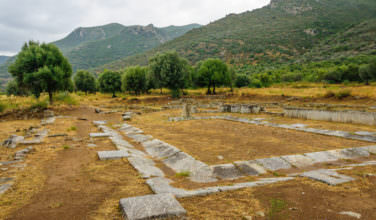Revealed: An Overview of the Greek War For Independence
With the exception of the Ionian Islands, the Ottoman Empire had ruled all of Greece since its conquest of the Byzantine Empire back in the 14th and 15th centuries. However, as revolutionary nationalism spread across Europe in the 18th and 19th centuries, Greek nationalism began to establish itself by drawing support from outside influences. It was at this time that the power of the Ottoman Empire started to decline.
By this time, Greeks of all classes strongly desired independence and they had the aid of other Europeans. Hellenism is a concept that had long been supported by Europeans who wanted to help Greece preserve its cultural heritage. When Greece needed assistance, countries like the United Kingdom were willing to offer aid.
Greek Revolution Beginnings
In 1814 in Odessa (a port city on the Black Sea in present day Ukraine), Nikolaos Skoufas, Emmanuel Xanthos, and Athanasios Tsakalof founded a Greek Independence Party- the Philiki Etairia, which means Friendly Society. They recruited intellectuals and military leaders, as well as priests, merchants, and rich expatriates abroad.
The obvious candidate to lead the Friendly Society was Ioannis Kapodistrias. This move enabled the message of the society to spread quickly and the result was the opening of numerous branches throughout Greece. Members met in secret and were representative of all spheres of Greek society.
The leaders of this movement believed that armed force was the only effective way to achieve liberation from the Ottoman Empire. As a result, they made generous monetary contributions to those who were fighting for their freedom.
With covert assistance from Russia and the support of Greek exile communities, they braced themselves for a rebellion. The only thing left was a suitable opportunity for revolt and Ali Pasha rebelling against Sultan Mahmud II provided this. With the Turks being preoccupied with this new threat, the Greeks took up arms.
Beginning and End of the Uprising
There is some debate as to the real beginning of the Revolution. Some say it’s March 6, 1821 when Etairist leader, Alexandros Ypsilanti, crossed the Prut River with a small force of troops that went into Turkish-held Moldavia. Another possibility is March 23, 1821 when rebels seized Kalamata in the Peloponnese peninsula.
Regardless, on The 25th of March 1821, Bishop Germanos at the Aghia Lavra monastery in the Peloponnese raised the Greek flag for the first time as a banner of revolt. This is the date that is celebrated in Greece today.
The ensuing revolution underwent three widely acknowledged phases: local successes registered between 1821 and 1825, the crisis due to the Egyptian intervention on behalf of the Ottomans (1826-1828), and a sustained period of European intervention on behalf of the Greeks that ended in the Turkish recognition of an independent Greece in 1832.
While the Greeks were ultimately victorious, it was not without consequences. They were unable to establish a coherent government and soon began to fight amongst themselves. This, perhaps, explains why they were unable to not only extend their control, but to firmly consolidate their position in the Peloponnese. However, despite these difficulties, they were successful in achieving independence from the Turks.
Categorized in: Modern Greek History
This post was written by Greek Boston





